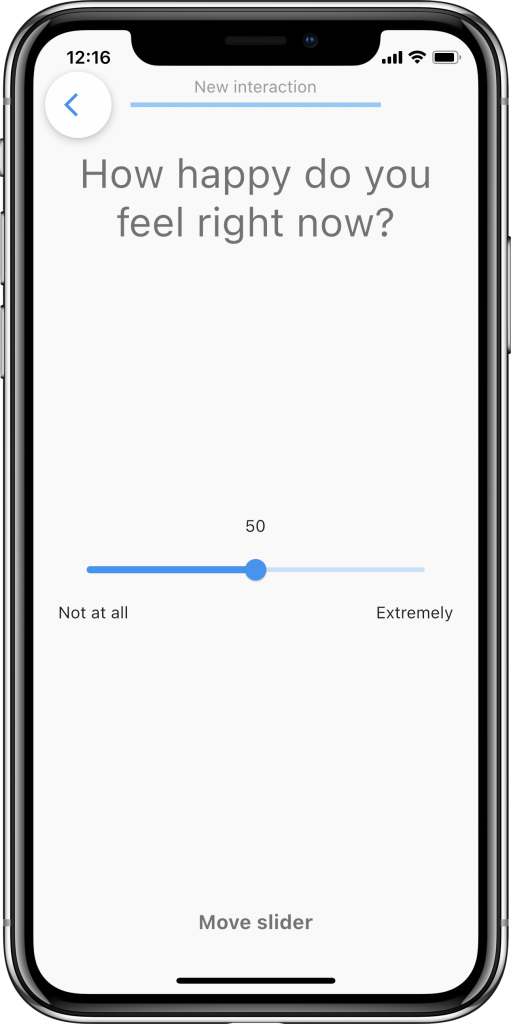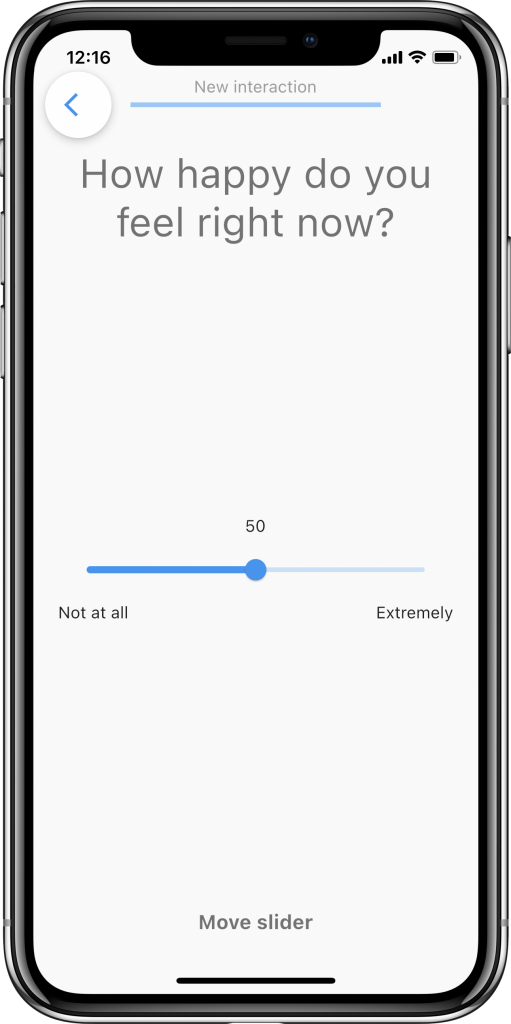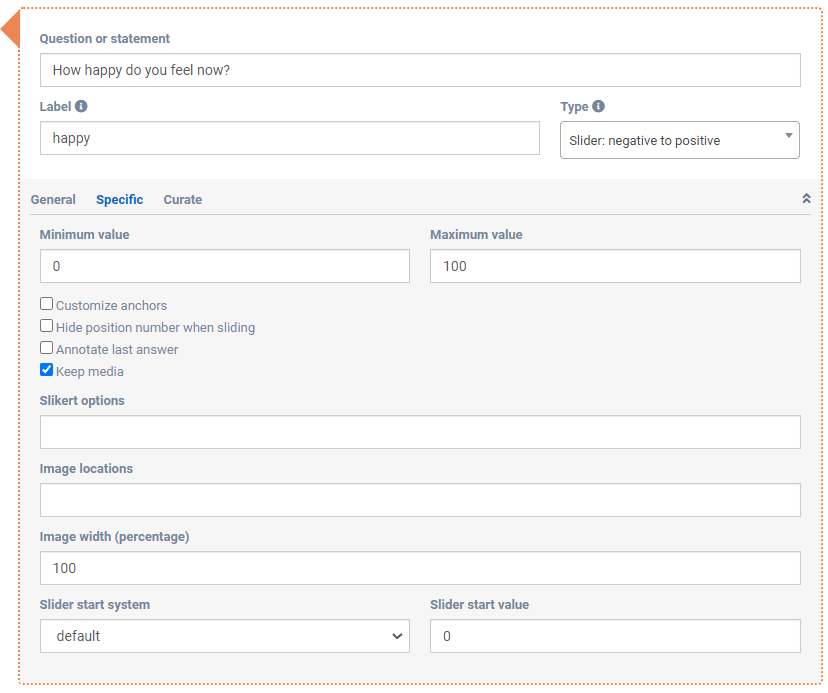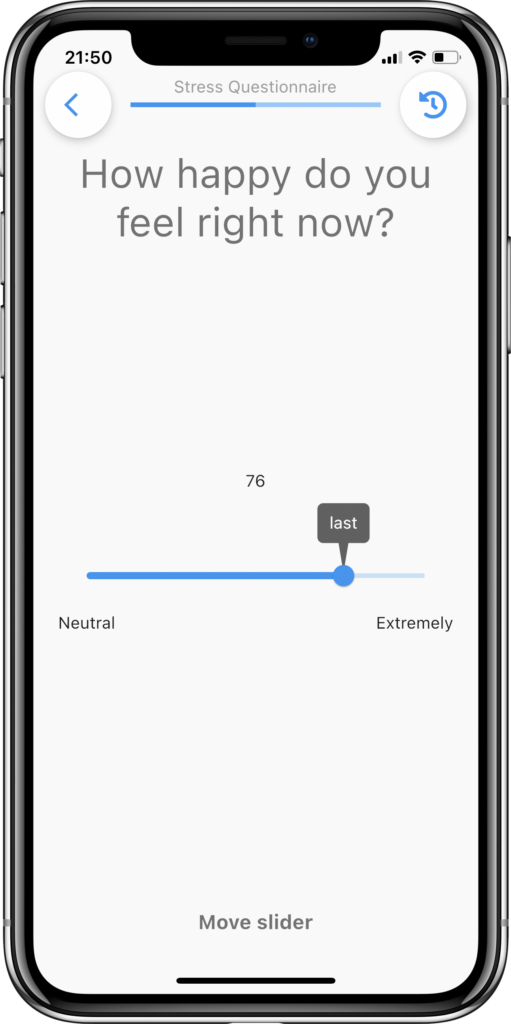The Slider question is a question type where the client can answer the question by means of a slider. The left and right anchors can be customized.
This is a quantitative question. Therefore, it is possible to compute correlations and perform quantitative analyses.


There are two types of slider questions:
- Negative to positive: a slider with anchor words Not at all and Extremely
- Neutral to positive: a slider with anchor words Neutral and Extremely
Settings
General
Specific
The specific settings are the same for both Slider question types:
- Neutral to positive (NeutralPos slider)
- Negative to positive (NegPos slider)


Minimum and maximum values
For the Slider question type, you have the possibility to set your own minimum and maximum values. You can indicate the left anchor value under Minimum value and the right anchor value under Maximum value. The default values are 0 and 100.

Customize anchors
When you check this box, you can adjust the name of the left and right anchor.
The default anchor names for the NegPos slider are Not at all and Extremely.
For the NeutralPos slider, these are Neutral and Extremely.


Hide position number when sliding
When you check this box, the number above your position (50 in this figure) is not visible.
Annotate last answer
When you check this box, the latest answer that the client indicated for that question, will be visualized.

Keep media
Check this box when you are planning to use this question often. In that case, the images are saved on the client’s phone so that they don’t have to load again every time the client gets asked this question.
Slikert options
You can choose to display specific words when the client changes the position of the slider. The video below demonstrates the case for the following Slikert options.

Image locations
You can fill in comma separated image locations. The images will be shown exactly like the slikert options.
Image width
Here you can adjust the width of the images (relative to the width of the screen).
Slider start system
Here you can adjust the place where the slider starts. Although this might seem to be a small detail, it can highly influence the data collection. For any starting value, the participant first needs to touch or move the slider before he or she can go on to the next question.
- Default: the slider starts in the middle of the slider. If the min and max of the slider are relatively 0 and 100, the slider starts at 50. This the standard setting for most sliders in apps. However, because the app user has to touch the slider, this might result in a bimodal distribution over time. That is, participants who want to put in something average (i.e. the middle of the slider) slightly slide to the left or right (as they have to touch the slider).
- Specific: the slider starts at a specific point given by the researcher (e.g. the minimum or the maximum).
- Last: the slider starts at the last answer, the answer from the previous time point (similar to annotate last answer). This makes the slider question much less static (and more dynamic) in that it makes it possible to answer each question relative to the previous answer. Optimally, this is used together with annotate last answer. The problem with this option is that not all researchers want the measurement to be relative.
- Empty: Before sliding, there is no slider button. This will not influence the participant in anyway as there is no slider button to start with. The disadvantage is that this is less user-friendly as not everybody will immediately know they have to touch the slider when there is no slider button in the beginning.
- Random: the slider starts at a random point. Here, all effects are averaged out over multiple measurements.
Piping from a previous questionnaire
You can use an answer given to a previous item in a following item. Slider answers can be used for this.
Conditional question
Slider questions ask the client to indicate a number on a scale. Therefore, a conditional question is triggered when the client’s number falls within the interval you assigned to the conditional question.
